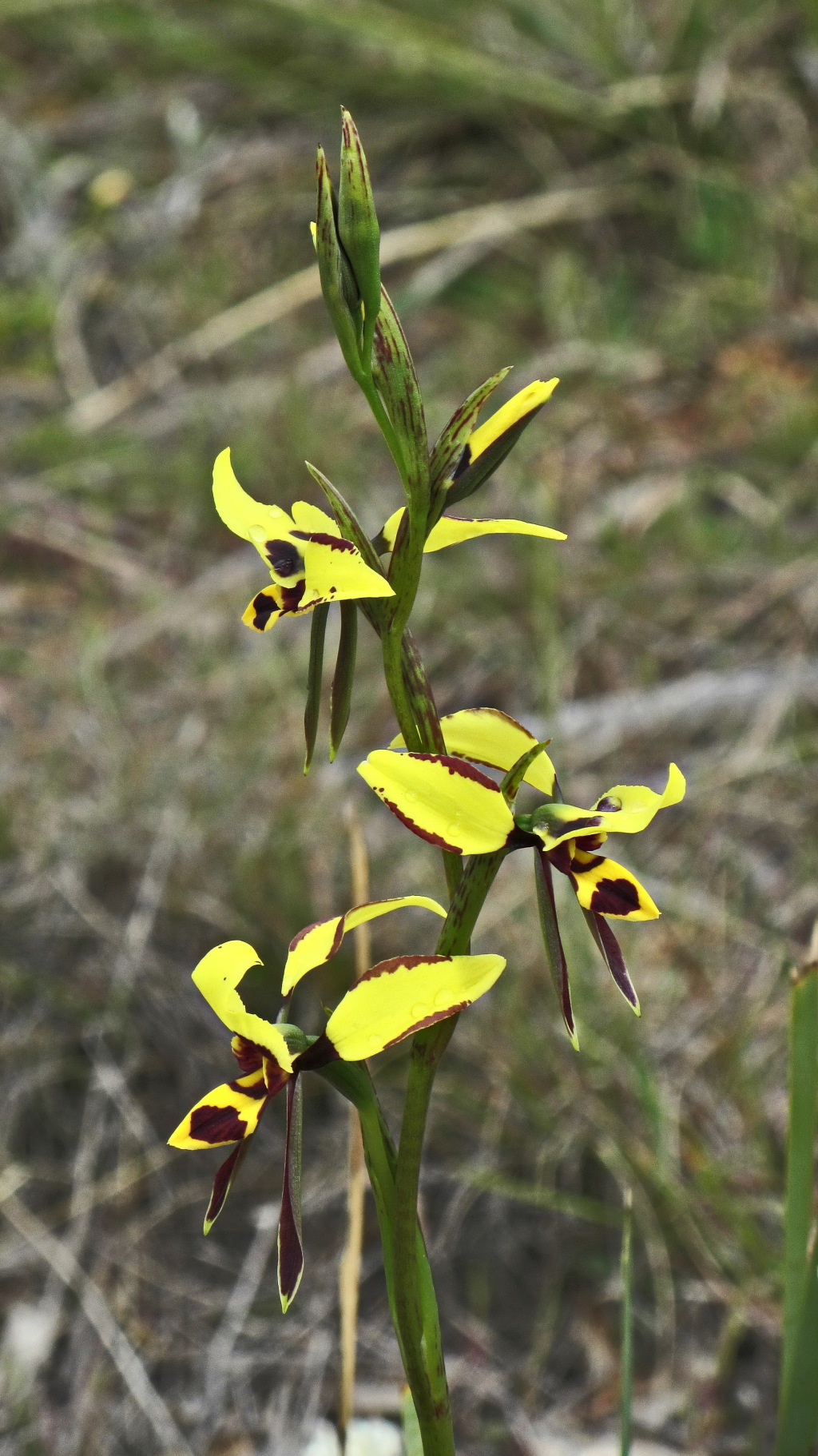Diuris sulphurea
R.Br. Tiger OrchidFlowering plant slender to stout, 20–50 cm tall. Leaves 1–3, linear to linear-lanceolate, channelled, lax, 20–50 cm long. Flowers 1–7, yellow with a few brown markings; pedicel (excluding ovary) 1–4 cm long, slender, mostly enclosed within bract; dorsal sepal obliquely erect, ovate, 15–20 mm long, with a pair of large dark brown blotches near base; lateral sepals deflexed, usually parallel, linear, 15–25 mm long, green or green and brown; petals erect or spreading, 16–26 mm long, claw short, brown, lamina ovate to elliptic, yellow. Labellum obliquely deflexed, yellow with transverse dark brown blotches near apex and other brown markings, 10–15 mm long, 3-lobed; lateral lobes about half as long as mid-lobe, broad, obovate, outer margin towards base irregular; mid-lobe spade-shaped to rhombic, strongly folded, margin often recurved; callus ridge extending from base to midway of lamina, merging into central keel. Column wings about same height as anther. Flowers mostly Sep.–Dec.
LoM, MuM, Wim, GleP, VVP, VRiv, GipP, OtP, Gold, CVU, GGr, DunT, NIS, EGL, EGU, WPro, HSF, HNF, Strz, MonT, HFE, VAlp. All states except WA, NT. Widespread in heaths and open woodlands in southern parts of the State, largely coextensive with D. pardina.
Diuris sulphurea is known to hybridize with D. pardina and D. orientis.
Entwisle, T.J. (1994). Orchidaceae. In: Walsh, N.G.; Entwisle, T.J., Flora of Victoria Vol. 2, Ferns and Allied Plants, Conifers and Monocotyledons, pp. 740–901. Inkata Press, Melbourne.
 Spinning
Spinning


